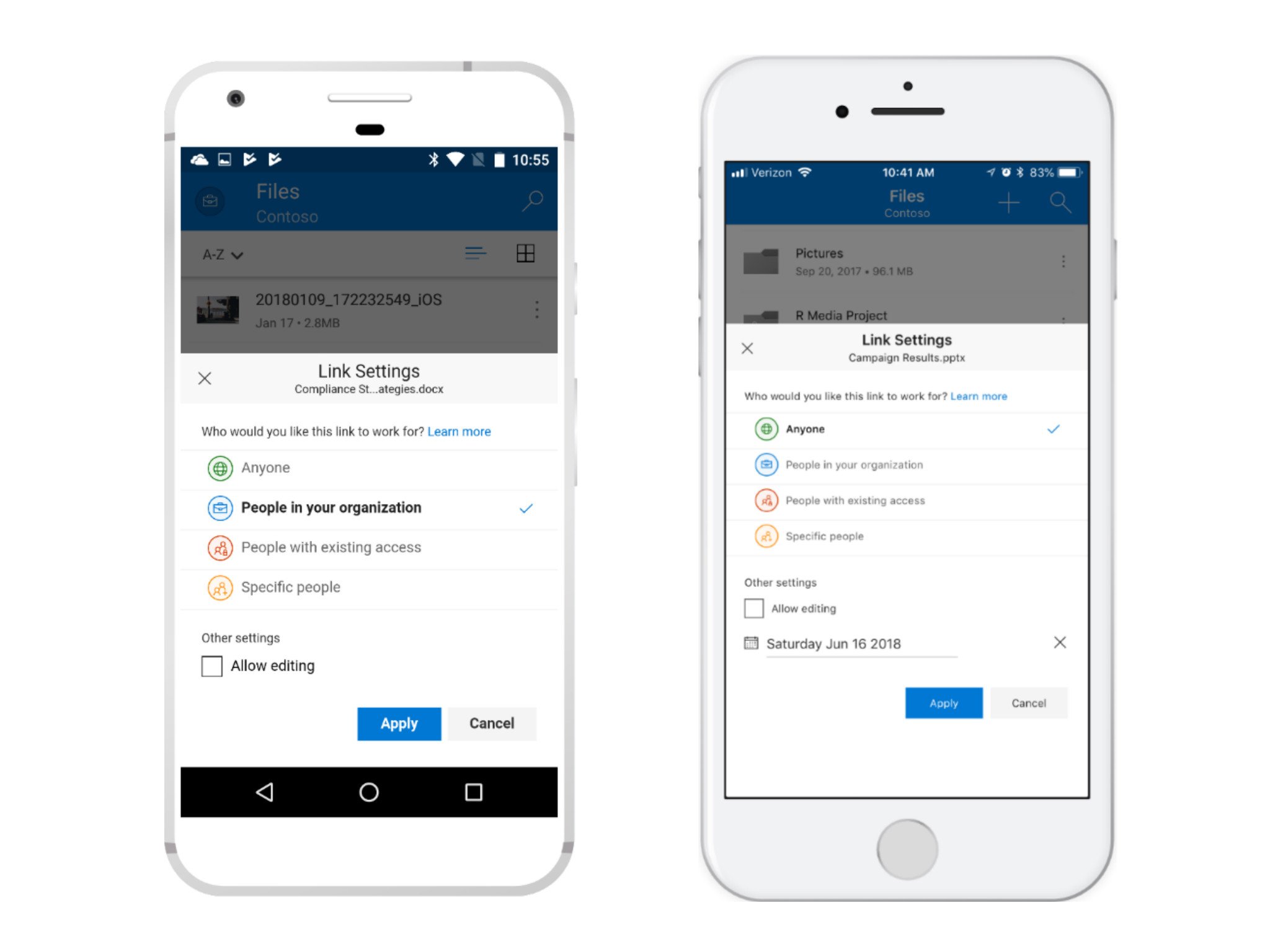OneDrive picks up new sharing experience on Android and iOS
OneDrive's unified sharing experience is now coming to the mobile apps on iOS and Android.

Microsoft is giving its OneDrive mobile apps a bit of a sharing makeover today. The company announced a new sharing experience, meant to match the UI that's currently available on other platforms, is now available for Android and iOS.
The new look provides a simplified set of controls and permissions. You can quickly select to share a file or folder from OneDrive with specific people or send a link to those who need access. You can also choose to allow editing with a checkbox, and control how long people will have access to the file or folder.
Most importantly, the interface matches that available on the web, in Explorer, and via Office apps, so you've got a unified sharing experience everywhere.
Aside from the OneDrive mobile apps, Microsoft also has some changes in store for Mac users. Starting this week, the standalone OneDrive app will be automatically installed as part of the Office 2016 for Mac package. If you're already using the version available on the Mac App Store, the standalone version will replace it and automatically migrate your settings. Microsoft explains:
Why are we doing this? First off, we want to make getting OneDrive as easy as possible as well as you up and running quickly. Second, many customers have asked us to add the standalone version of OneDrive as it will not only automatically launch at startup but the OneDrive quick access icon will stay persistent in the Mac Finder, much the same way it does on the Taskbar for Windows users today.
Additionally, Office documents on Mac will now only sync the changes, instead of syncing the full file each time. Files that have already been synced locally will now open faster, Microsoft says.
According to Microsoft, the new sharing experience is now available on Android and is currently rolling out on iOS. The OneDrive standalone app for Mac will be a part of Office 2016 starting this week.
All the latest news, reviews, and guides for Windows and Xbox diehards.

Dan Thorp-Lancaster is the former Editor-in-Chief of Windows Central. He began working with Windows Central, Android Central, and iMore as a news writer in 2014 and is obsessed with tech of all sorts. You can follow Dan on Twitter @DthorpL and Instagram @heyitsdtl.
